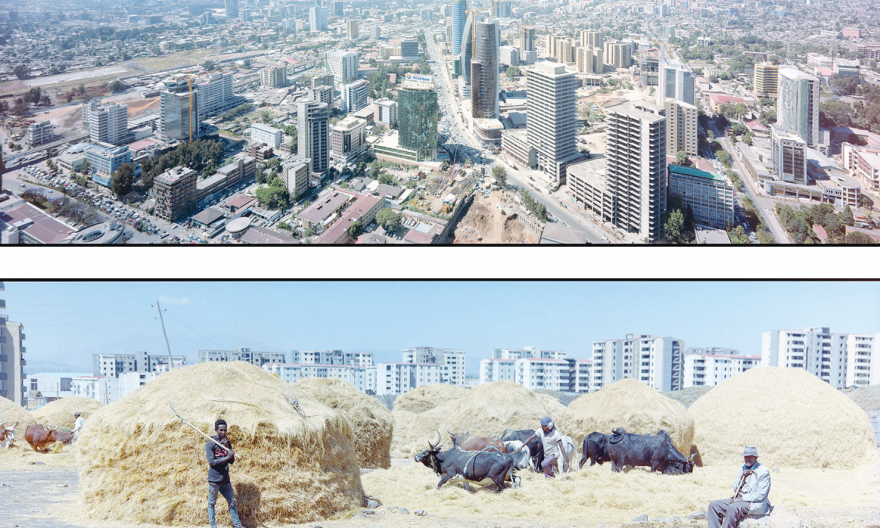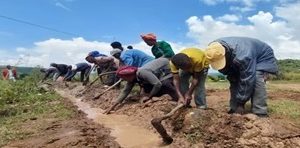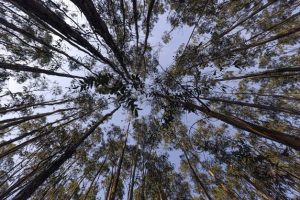
BY LEULSEGED WORKU
The city of Addis is expanding all the time. Starting from the time it was founded by the two visionary leaders Emperor Minilik II and Etege Tayitu. The city has never stopped expanding in all direction- vertically as well as horizontally. This expansion is a gradual move that took the effort of leaders in particular and the people in general.
In fact, the city of Addis, like other cities in the world, has gone through several challenges. Owing to regime changes, it has witnessed several changes. Especially, following its rapid and unprecedented economic growth, the social growth has also saw progresses through time. Government’s road development and expansion projects, (construction of new roads, and upgrading the existed ones), has resulted in it both positive and negative changes depending on the situated social, spatial, economic and environmental context. The project, by demolishing several shabby and old houses and replacing them by new structures, including glittering and luxurious buildings, malls, villas and condos, it has transformed the features of the city magnificently.
What is more, the urban development activities designed to scale up city’s attractiveness and competitiveness, and in return, attract investment have brought about significant changes on the city.
Lately, a photo exhibition that shows the expansion of Addis Ababa City in all direction was held here in Addis Ababa at Addis Ababa Exhibition Center. On the event, Sebastien Cailleux, French photographer, has presented several panoramic pictures that show the feature of the city. Since the pictures were taken from different angles and different villages in Addis, they have a power to tell visitors how fast the city is growing.
On his photograph, Sebastien has perfectly shown the contrasting view of Addis in one picture. A picture that shows a lady with dried dung nearby the capital is one good example to this.
Dried dung or ‘Kubet’ in Amharic is one of the sources of fuel in rural parts of Ethiopia. In times where modern technologies were not introduced to the society, rural Ethiopians had a culture of drying manure in sunlight and use it to cook foods. This system is still being practiced in almost all rural parts of the country and even in some parts of Addis Ababa where there is an access to cow dung.
The black and white pictures that are staged on the exhibition have a different way of expressing Addis Ababa`s growth in vertical and horizontal direction.
“Addis is growing in every single day. The economic growth is visible. Everyone is active in every day. From the mall business to the biggest one are always moving very fast. Everyone is on duty. This is what I want to portray in my pictures. As a photographer and a visitor; everything I observe in Addis is unique and entrancing to me. Whenever I come to Ethiopia, I always witness a new change.”
As the capital city of Ethiopia and Africa, Addis Ababa has a special value. Addis is growing every single day. The expansion of Addis has a positive and a negative impact on the society. In those old villages (Arada and others) it is common to observe strong family bondage where mother and father reside with their children and grandchildren or even with others who do not have direct blood linkage.
No matter how tiny their house is, they live together sharing whatever they had with their family and relatives. In contrast, in the newly founded villages, especially in those residential units [condominiums], there is relatively a loss family bondage. More individualistic lifestyle is common. This is not only the feature of Addis Ababa. It is also part of other cities as well.
According to Sebastien, with the emergence of social media and phone cameras, everyone has become a photographer these days. However, what differ a professional photographer from the other is, he/she knows how to write systematically with the camera light.
Everyone can hold pen and write something but, it takes time and experience to write properly and perfectly. Professional cameraman knows how to tell story with a single picture. As the saying goes “Experience makes man perfect” every cameraman has a unique talent to express events with photography. In my experience as a photographer for the past 30 years, I have developed my unique style of taking photographs. Through which I can tell people the external world with my camera.
Truly, as this reporter has observed in the exhibition, every picture that was taken by Sebastien has a story to narrate. All the pictures taken by his experienced eyes have caught Addis in a unique way. His experienced eyes did not miss any opportunity. This is especially true for those old villages that were taken by his camera and displayed in the exhibition.
As it was mentioned by Sebastian, the unique feature of old villages in Addis has something to tell. Arada (Piassa), is one of these unique places that was appreciated by him. As the center and the origin of Addis Ababa, Arada has a unique feature. It is a mother for other villages. It is a melting spot, administrative posts, universities, schools and artists are living in harmony. Kazanchis and Merkato are also the other unique villages of Addis. They have something to tell about the past and they also have something to tell about the future of the country.
The Ethiopian Herald 18 April 2021





